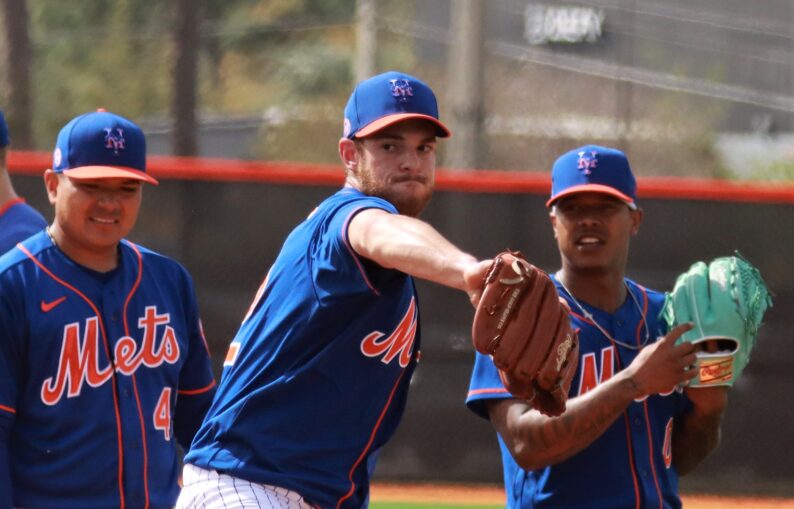
Photo by Ed Delany/MMO
On August 18 — assuming there is one — Steven Matz will reach five years of major league service time.
That milestone is a big deal for any player and one that only a relatively low percentage reach. Once there, Matz can no longer be optioned to the minor leagues without his consent.
Not that he would be (Matz hasn’t spent time in the minors outside of rehab assignments since making his debut), but it underscores how the left-hander from Long Island, just yesterday (it feels like) deemed the top prospect in the organization, is on the cusp of officially becoming a veteran.
And yet it appears that there is still another level that he can ascend to, even after 101 MLB starts that have provided a pretty good idea of what he’s all about.
In his final outing before Opening Day, Matz threw about 75 pitches in an intrasquad game on Monday. He could start the second game of the regular season on normal rest.
“Today was probably the best I’ve felt as far as all my pitches go,” he said on a Zoom call after allowing two runs in five innings.
The difference between Matz continuing his career as a perennial back-end starter and becoming a linchpin at the front end appears to be the development of two of those pitches — his sinker and curveball; more specifically, how they play off each other.
And Luis Rojas, when asked what has been most notable about Matz’s performance in camp thus far, did not hesitate.
“The first day that he threw that we had those reads from behind the plate, I got really pumped when I saw that,” the skipper said. “Mid-90s to even upper-90s at times. Then showing that slower curveball — that velo differential.”
We won’t have actual data until the season begins, and I wouldn’t put it past a manager to publicly hype up a pitcher that could use a confidence boost, but harder-throwing Matz is unequivocally a better Matz.
Let’s break it down this way: Matz virtually pitched one full season — 28 starts — over his first two calendar years in the majors. It’s unquestionably been his best stretch to date, as he posted a 126 ERA+ from 2015-2016 and a 89 ERA+ from 2017-2019.
Perhaps it isn’t a coincidence that 28.4% of the sinkers Matz threw in that first period were 95 mph or harder. Since 2017, that rate has plummeted to 6.3%.
The change has manifested itself in the results, too. In the first period, 4% (11/277) of the sinkers put in play against Matz were classified as barrels, the worst kind of contact a pitcher can allow. Over the second period, the rate has doubled to 8.5% (48/566).
Again, you typically aren’t expecting pitchers to change their profiles by the time they cross the five-year mark. A Steven Matz that consistently throws 95-96 mph with a curveball nearly 20 mph slower could buck the trend and provide the Mets with a reliable arm to take the hill after Jacob deGrom.














